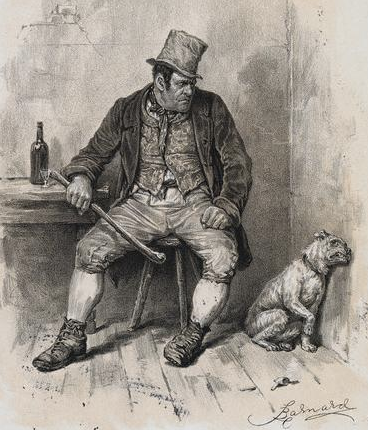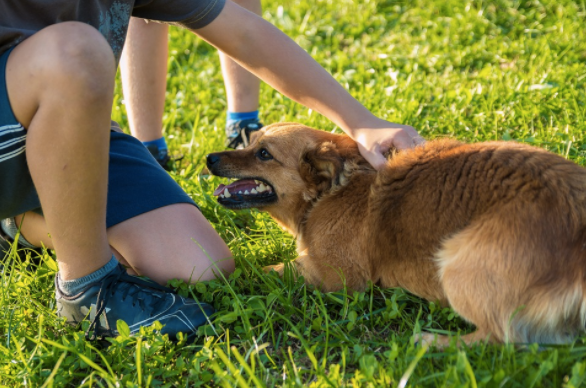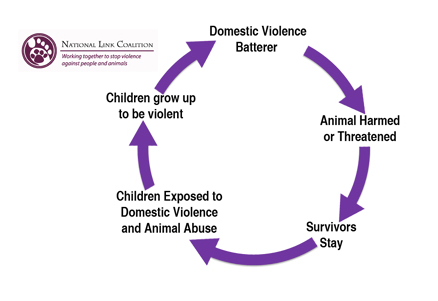When I was a child, I saw a stage production of Oliver Twist. To this day, what sticks with me the most from that early theater experience is one of Dickens’ most vicious characters, Bill Sikes. I remember the scene where Sikes kicked and swore at his cowering dog until the poor creature bit his boot, resulting in Sikes grabbing for a nearby fireplace poker with one hand, and flipping open his pocketknife with the other. Only Fagin’s well-timed entrance allowed the dog to escape. Sikes’ girlfriend Nancy, however, was not so lucky. Sikes later beat her to death for turning on him to protect Oliver.

An early exercise of brutal control over the vulnerable is not just a theme running through a classic novel. It is a dramatic indicator of a developing pattern of seeking power over others. A batterer’s first target is often the family pet. Numerous studies cite animal abuse as the beginning of most violent offenders’ criminal legacy—particularly rapists, serial killers, and domestic abusers.
A generational cycle of family violence is present in many instances of intimate partner abuse as well as child abuse. Children learn what they live, which can lead them down the path to interpersonal violence. Anger or frustration is directed at the only individuals within the family who are more vulnerable than they are, in a pecking-order manifestation of battering. Because animal abuse is concurrent in so many cases of domestic violence, when children are present in the home, abusive behavior toward pets is a bellwether.
I remember being in Kindergarten and watching some boys at recess pull the legs off daddy long legs spiders until nothing but “the circle” remained. They thought it was funny and I thought it was monstrous.
The Greek philosopher Bion said, “Boys throw stones at frogs in fun, but the frogs do not die in fun, but in earnest.” I think what Bion was getting at is that young children often developmentally lack the capacity to empathize with the feelings of other living beings, especially when they are not human. But, as disturbing to me as it was to witness the dismemberment of insects, it’s not much different than when kids intentionally step on them, and no one would call that animal abuse. It is not on par with deliberately injuring the family dog or cat.
Cruelty to animals is often viewed as a childhood prank, chalked up to the old adage “boys will be boys.” Very young children sometimes test limits by pulling the dog’s tail or chasing the cat. But serious animal abuse by children is never normal, and should always raise red flags for parents and professionals. These kids are sending out warning signals that they pose a risk to the safety of others, as well as themselves. When older children lack remorse for causing pain or injury to an animal, it is a considerable cause for concern that should be acted upon.

The New York Times reports that “as a boy, Jeffrey Dahmer impaled the heads of cats and dogs on sticks; Theodore Bundy, implicated in the murders of some three dozen people, told of watching his grandfather torture animals; David Berkowitz, the “Son of Sam,” poisoned his mother’s parakeet.” According to The Humane Society, getting these children the psychological help they need while they are still young can curb violent tendencies before they escalate in adulthood.
And there is another purpose—and consequence—of violence toward animals. The dynamic of animal abuse in the context of domestic violence is particularly pernicious. Pets are beloved members of the family, so the threat of violence toward a pet becomes a powerful way for the abuser to intimidate, silence and control his victim, and is a common reason victims are afraid to leave their abusers.

If we are ever to break the cycle of violence, we must include the children. Sometimes it is easier for them to talk about what has happened to their pets than it is to talk about what has happened to their mothers, or themselves. Sometimes when they are already aggressing against animals, the pattern can be stopped.
The good news is that through therapeutic intervention by private clinicians and those working with social service agencies or domestic violence organizations, we can identify and address cases of animal cruelty perpetrated by children who are witnesses to family violence. In so doing, we lessen the odds that they will grow up abusing animals and possibly graduating on to hurting other people. And we must.

Lori Day is an educational psychologist, consultant and parenting coach with Lori Day Consulting in Newburyport, MA. She is the author of Her Next Chapter, and a member of the Board of Directors of the Jeanne Geiger Crisis Center.
